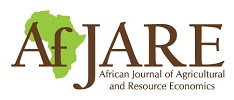The impact of the National Food Buffer Stock Company on price transmission in Ghana
Achieving state market policies depends partly on the extent to which changes in commodity prices are transmitted along supply chains. This paper examines the effect of the National Food Buffer Stock Company (NAFCO) on price transmission between white maize wholesale and retail markets in Kumasi, Ghana.
